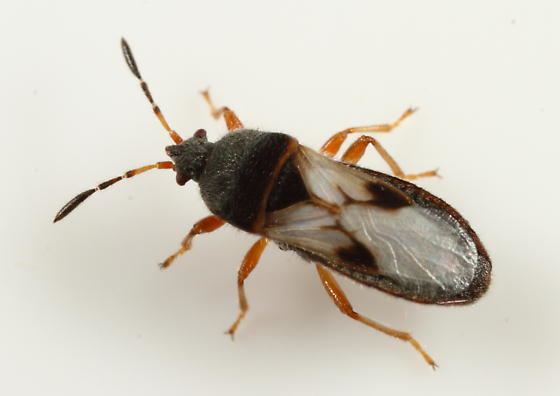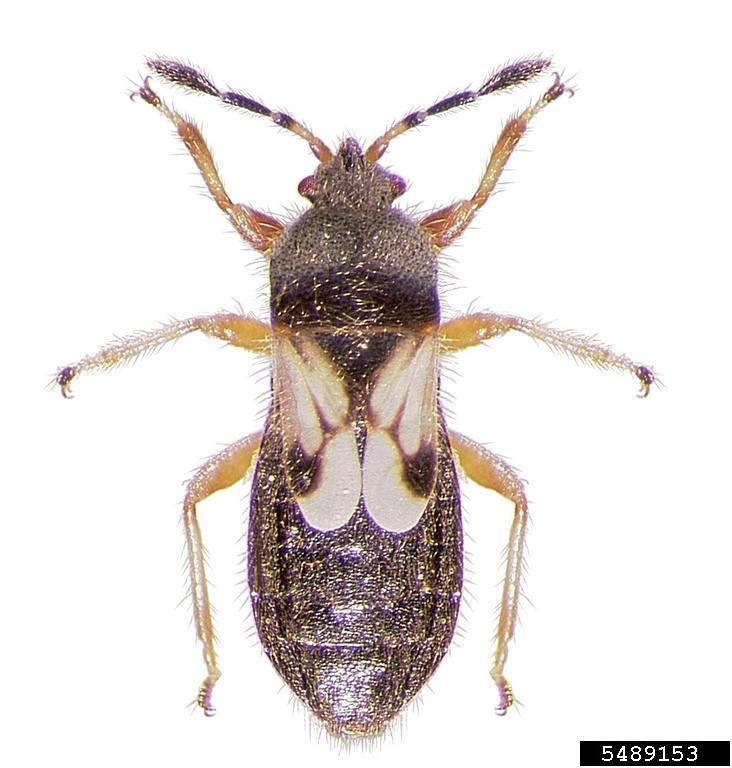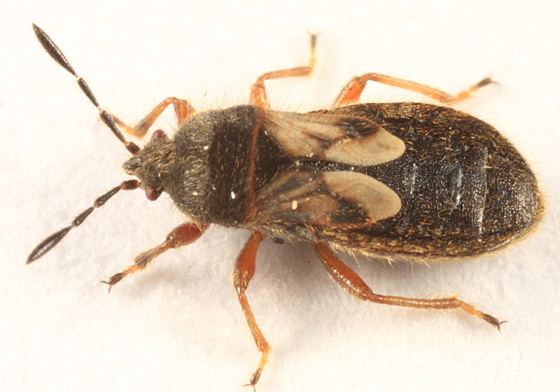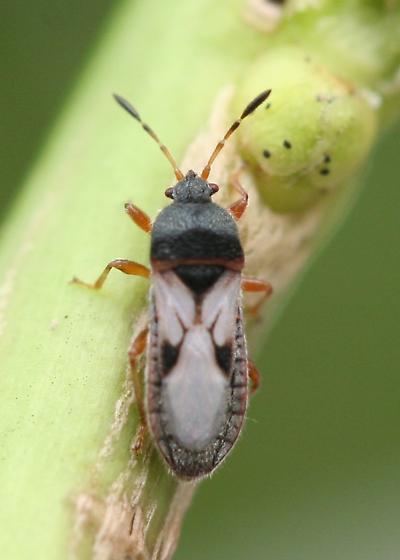Scientific name Blissus leucopterus Rank Species | ||
 | ||
Similar Blissus, St Augustin, Crambus, Lygaeidae, Blissidae | ||
Blissus leucopterus also known as the true chinch bug is a small North American insect in the order Hemiptera and family Blissidae. It is the most commonly encountered member of the genus Blissus, which are all known as chinch bugs. A closely related species is Blissus insularis, the southern chinch bug.
Contents

The name of the chinch bug is derived from the Spanish word chinche. This word has come to mean “pest” and is used in many phrases such as tener de chinches la sangre, meaning tiresome or troublesome. The word “chinch” is also used for the bed bug, and is derived from the Latin word cimex of the same meaning.

These bugs tend to gather on sunny open patches of turfgrass. Due to their small size, chinch bugs are hardly noticeable. Therefore, they become problems since they are considered pests that feed on stems of turfgrass.

Identification

Blissus leucopterus are approximately 4 millimetres (0.16 in) long when fully developed. The adults vary in colour from dark red to brown body with white wings and red legs. Young nymphs are usually bright red with half the size of the adult. A distinguishable feature is the white band found on the nymph's abdomen. This band will be covered with wings and changes the colour to black during development.
Distribution

Blissus leucopterus are native to the Americas. They are found throughout the US, southern Canada, Mexico, and Central Americas.
Diet

Blissus leucopterus feed on plants belonging to the grass family; both wild and cultivated, such as wheat, rye, barley, oats, and corn. They suck the sap out of the growing plants. When the plants ripen or become dry, they travel to other growing plants to feed.
Life cycle
The lifespan of the Blissus leucopterus is a typically less than one year. The eggs of 2 generations are laid down from spring to summer where they develop into adults. During the fall, the adults from the 1st generation would die off, while the adults from the 2nd generation would retreat from the crops to look overwinter shelters. The adults would overwinter in any type of shelters they can find. Such places include hedgerows, road sides, bushy fence rows, edges of woodlands, soybean stubble, under tree barks, bunch grass, and inside field mice nests. Once they emerge from their hibernation, they return to the crop fields to feast and breed before their death.
Blissus leucopterus prefers hot, dry, and sunny conditions, while moist, warm, and humid conditions are detrimental for their population; these conditions promote the growth of fungus which is fatal to them. Other elements that reduce their population is heavy rains. Developing nymphs that are hit with rain become trapped in the soils, killing them. Their natural predators include the big-eye bug (Geocoris bullatis), and the tiny wasp (Eumicrosoma beneficum), which feast and parasitize on them.
Time line
Human impact
The chinch bug, a native to the United States and common in Midwestern States, has had a great effect on humans. The chinch bug naturally feeds on wild prairie grasses. As the Midwestern states were settled in the nineteenth century and crops of wheat, corn, sorghum and other grains were planted, they adapted well to these new species as habitat and food species. Throughout the 20th century, the chinch bug was a major pest to farmers, as they quickly decimated corn or wheat fields. To deal with this problem, many farmers in the area changed their crops to soybeans, which were not a host to the chinch bug. This led to a huge decrease in the chinch bug population in this area. Today they are mostly a common lawn pest, and are commonly treated with pesticides and pest-resistant grasses.
